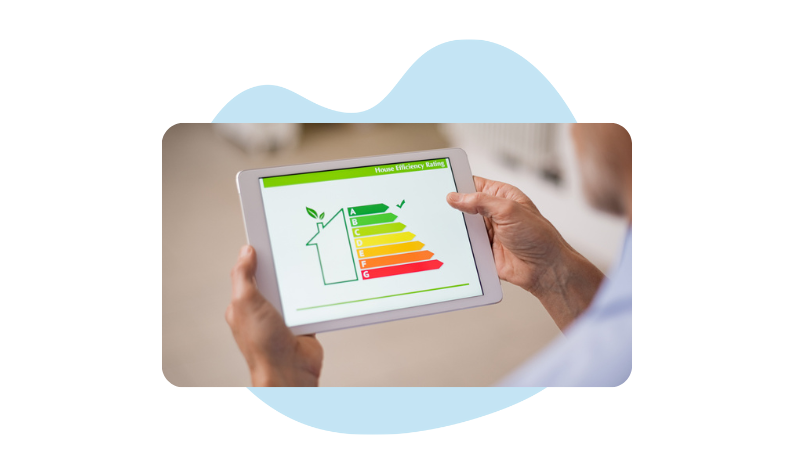Top energy saving tips for commercial buildings
Do you manage a commercial building?
If so, ensuring it meets the relevant energy efficiency standards could be absolutely crucial to your profitability.
Following these energy-saving ideas for commercial buildings will not only allow you to avoid the hefty fines associated with regulatory noncompliance, but they will also eradicate ongoing wastage.
Doesn’t that sound ideal?
 What are the major causes of energy loss in commercial buildings?
What are the major causes of energy loss in commercial buildings?
When it comes to saving energy in commercial buildings, there’s a clear process you need to follow.
It makes sense that you should start by analysing problem areas across your property, recognising that issues most often arise when appliances are old and/or damaged.
However… that’s not the only problem that needs addressing. Before you get started with tackling the problem at large, you should try to fix the smaller details like…
1. Wasteful power sources
We’re all guilty of leaving a wire plugged in or a light switched on just because it’s convenient. This, though, can cause unnecessary energy consumption.
2. Incandescent light fixtures
Now that alternatives exist to incandescent light fixtures, there’s no reason to keep using them. They are incredibly energy inefficient and can quickly add to your electricity bill.
3. Poor building structures
When a space hasn’t been designed with energy efficiency in mind, wastage will occur. For instance, heat rises so make sure your commercial buildings have properly insulated roofs.
How to save energy in commercial buildings
However, saving energy is not always straightforward. As it stands, you might not have the right analytics in place to highlight what’s consuming so much energy in the first place.
Going forward, then, there are some short and long-term actions that can be taken to improve the energy efficiency of a commercial building.
It all starts with a plan.
Step 1: Identify how much energy you use
If you’re subletting a property or sharing an office space with other businesses, then it might be hard to gain an accurate picture of just how much energy you are using.
With bills often being averaged out over a year, it’s important you do some research to save money in the long term.
Consider onboarding Energy Management Software to know exactly how much electricity and gas you are using and when.
Step 2: Pinpoint energy-draining appliances
To save energy in a commercial building, you need to gain a comprehensive understanding of the different appliances that are in use.
Perhaps some are damaged and/or working below the optimum energy efficiency standards because of their age. These devices are likely to fail in the future – an event that will cost far more than if they were replaced right away.
Step 3: Create an energy savings plan
Once you’ve identified what’s draining the most energy (and the various weaknesses of your commercial building), you have to create a strategy for changing and upgrading those appliances.
For example, you could plan to:
- Swap incandescent bulbs for LEDs. These consume far less energy and can last up to 25,000 hours on average.
- Invest in lighting sensors and time controls. These will ensure a room is properly lit while in use and turn off the electricity when it’s not needed.
- Setting up solar panels on the building’s roof. This will provide an additional (and free) source of energy – this’ll be more affordable than using the grid!
Step 4: Regulate energy usage
Maximum energy efficiency in commercial buildings can only be achieved when you’ve calculated for electricity to only be consumed when it is actively required.
You should set energy KPIs to track and measure consumption, encouraging tenants to turn off unused appliances.
Remember… even devices that are left on “stand by” could be using a surprising amount of energy. Is that a risk you want to take?
Step 5: Continue to monitor equipment
Your goal to save energy won’t work without an ongoing, building-wide effort.
Once you’ve started to make improvements around your property, be sure to keep on top of property maintenance to keep everything functioning.
Use the key principles of space management to your advantage and implement a system to monitor appliances – new and old alike.
3 Energy saving tips for commercial buildings
Once you have a plan in place to replace appliances around your building, energy efficiency is within arms reach.
There’s still more that you can do, though.
1. Change energy usage habits
To make the most of your new strategy to save energy in commercial buildings, you need to start encouraging other property users to contribute towards your goals.
This could involve some interesting conversations.
Tenants and visitors alike will need to learn about the importance of being proactive about turning off devices and lights that aren’t in use. You can go about this in a variety of ways.
2. Increase natural lighting
Did you know that most of the energy consumed by commercial buildings goes towards lighting?
A simple solution to address this is to expand the use of natural sunlight in the space – such as expanding window sizes or reducing the number of dark curtains.
Both of these will mean that, during the day, the need for electricity will be reduced.
3. Install smart meters
Thanks to today’s range of technology, there’s a heap of devices that can help you monitor energy efficiency in commercial buildings.
Consider using automated light and thermostat devices in combination with an accurate smart meter, and you’ll see an instant improvement. Less electricity will be wasted so that you (and your tenants) will notice a significant difference in cost.
4. Change your energy source
While this is more about saving money than energy, it’s really important that all businesses make ethical decisions.
As a property manager, then, it’s your responsibility to support their green mission and try to source electricity as sustainably as possible. Look to partner with green energy providers in your area or, as mentioned earlier, install solar panels for a carbon-neutral outlook.
Energy-saving ideas for commercial buildings: FAQs
With average energy costs rising (and no sign of them slowing), it’s critical that you do everything you can to reduce your consumption.
Rather than sitting in the dark, you can make the most of natural light in your building by expanding window sizes.
If you still have questions about saving energy in commercial buildings, perhaps these FAQs can provide you with the guidance you need.

Achieve energy efficiency in commercial buildings with energy management software
Convincing senior members of your organisation (including directors, stakeholders, and even tenants) of the benefits of reducing energy consumption is dependent on the evidence you provide.
If reporting is in place to demonstrate, visually, how energy-saving initiatives improve your commercial building, senior members will be more likely to buy into the process and support it. That’s where MRI’s energy monitoring software, MRI Energy, comes in.
It’ll provide you with energy-saving ideas for your commercial building and analyse ongoing usage and consumption. To find out more and discover how you can easily follow the UK’s energy efficiency standards, get in contact today.
